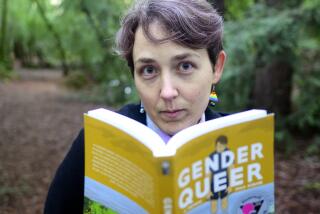New Books Help Get to Root of Problem
- Share via
Genealogical reference books on specific locales and transcription of particular records are getting better and better. Genealogists are fortunate that so many outstanding books now are being published.
-- Among the most recent ones that can aid your research are: “Ohio Guide to Genealogical Sources” by Carol Willsey Bell (Genealogical Publishing Co., 1001 N. Calvert St., Baltimore, Md. 21202, $32.50 ppd.). Millions of Americans have ancestors who came through Ohio--it was known as the “gateway to the West”--and for those researchers, this new book is indispensable.
It covers each of Ohio’s 88 counties with basic information about them and their records, plus a detailed breakdown of the court records available on microfilm. Additionally, there is an itemization of the census records available for each county, including special schedules, an enumeration of the county’s records on microfilm in the Ohio State Library, plus manuscript collections, newspapers, tax records, articles from periodicals and a comprehensive list of published sources for each county.
-- “Tracing Your Family Tree” by Jean A. Cole and Michael Armstrong (available from J. M. Armstrong Publishing, 141, Great Whyte, Ramsey, Huntingdon, Cambs., PE 17 1HP, England, $21.20 airmail or $15.30 by surface). While this book contains basic genealogical research instructions, its value to the American researcher trying to trace British lines lies in the chapters dealing with the various kinds of records. Especially good are those on parish registers, the nonconformists’ records, manorial records, directories and newspapers--all records that you need to know about and where they can be found in the United Kingdom. The chapter on miscellaneous sources--schools, merchant seamen, passports, Freemasons, chartered companies, foundlings, tontines, lay subsidies, close rolls, inquisitions post mortem and feet of fines--may provide you with new sources to explore--some you probably do not know exist.
-- “Maine Families in 1790” (Volume I) edited by Ruth Gray (Picton Press, P.O. Box 1111, Camden, Maine 04843, $32.50 ppd.). This first volume in a series by the Maine Genealogical Society contains comprehensive three-generation studies, complete with voluminous, specific documentation, on more than 400 families residing in Maine at the time of the 1790 federal census. It is arranged alphabetically starting with Austin Alden, and includes an every-name index, making it a quality research tool.
-- “Guilford County, N.C.: A Map Supplement” by Fred Hughes (The Custom House, P.O. Box 549, Jamestown, N.C. 27282, $10 ppd.) This monograph is part of a series, dealing primarily with information of 18th-Century Piedmont, N.C. For the genealogist whose ancestors came from this region, it is an important new source, for the author has included some information about early schoolmasters, the Regulators, confiscated Tory estates, church records, tavern owners, gun makers, a muster roll of the Guilford Militia and an abstract from Rowan County court minutes pertaining to Guilford County people.
Using the map prepared for this series, one can locate precisely the properties of the landowners in the 18th Century. The Guilford County map is available from the Custom House also for $6 postpaid.
-- “Applied Genealogy” by Eugene A. Stratton (Ancestry, Inc., P.O. Box 476, Salt Lake City, Utah 84110, $16.20 ppd.) This is not another “how-to” book about genealogy, but rather one focused on methodology and genealogical evidence, with some case studies in royal genealogies.
More to Read
Sign up for our Book Club newsletter
Get the latest news, events and more from the Los Angeles Times Book Club, and help us get L.A. reading and talking.
You may occasionally receive promotional content from the Los Angeles Times.







